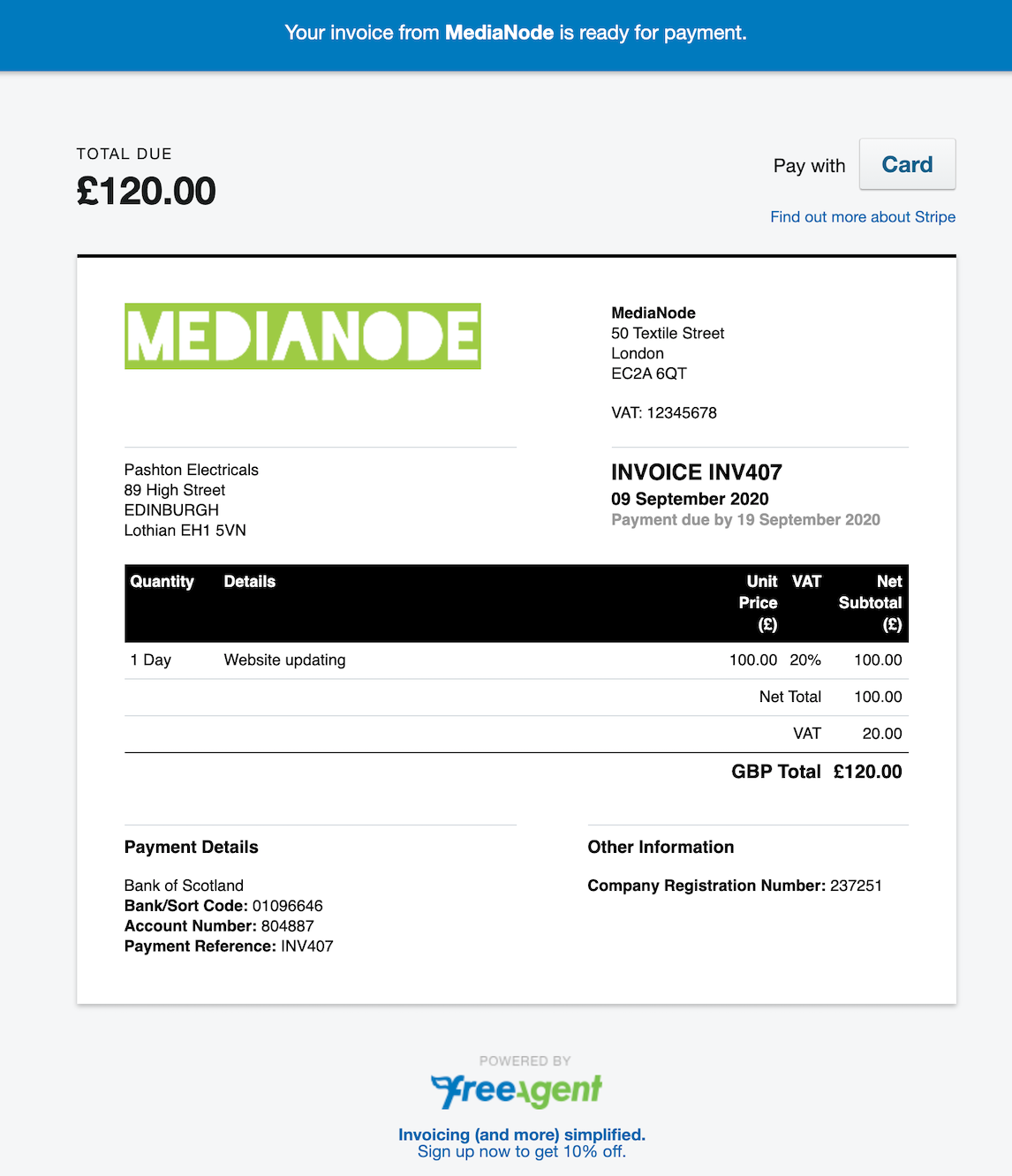
If the quantity is an integer, this will be displayed using Stripe's native support for quantities. Sub-line items that are based on metrics will also display a quantity and unit price. This setting also enables displaying quantities on Stripe invoices. Given the example above, the Stripe invoice would have two line items: "Cloud database - CPU hours" and "Cloud database - base charge." These line items use a description that combines the name of the product with the name of the charge. Metronome will include each individual charge (sub-line item) as a line item in Stripe. If you would like Stripe invoices to display the breakdown of sub-line items, you can select the "enable sub-line items" option. "Cloud database" with a price that reflects the overall subtotal for that product. "CPU hours" or "base charge." Stripe invoices only have line items, so by default Metronome just adds a line item per product, e.g. "Cloud database," while the sub-line items are the charges within that product, e.g. Metronome invoices have line items and sub-line items. The "skip zero-total invoices" option instead only sends Stripe invoices when there's a non-zero total due. Skip zero-total invoices īy default, if Stripe invoicing is enabled for a customer, then all invoices that are finalized in Metronome are sent to Stripe.
#Stripe invoicing update
Invoices in Stripe will then stay in the draft state until you update them. If you would prefer to review invoices first, you can select the "leave invoices as drafts" option to set auto_advance to false. This means invoices will immediately be eligible for collection. (See Stripe collection method below.) Leave invoices as drafts īy default, Metronome sends all invoices to Stripe using the auto_advance option set to true. This setting has no effect for customers configured to be charged automatically. You can use this option to change that to a custom value. Stripe defaults to setting invoices to be due 30 days after they're created. The following options are available from the Billing configuration page. The per-customer configuration can be found in the Settings tab when viewing an individual customer. You can access the global options in the Metronome UI by visiting the Billing configuration page. Stripe invoicing is configurable through a number of global and per-customer options. You can also visit the Billing configuration page to set up Stripe access in advance. The first time you set up a customer to be billed with Stripe in the Metronome UI, you'll be prompted to grant Metronome access. This level of access is necessary for Metronome to be able to create Stripe invoices on your behalf. To use Stripe as an external billing provider, you'll first need to grant Metronome read/write permission to your Stripe account via OAuth. You can use the Metronome invoice's external_invoice.invoice_id field to find the corresponding Stripe invoice to see whether an invoice has been paid.

If you make an adjustment to the invoice in Stripe, that change will not be reflected in Metronome. Then, when the invoice is finalized at the end of the billing period, a corresponding invoice is created in Stripe. First, Metronome prepares a draft invoice, updating it throughout the billing period.

When using Stripe as an external billing provider, invoices exist in both Metronome and Stripe. Stripe invoices will only show charges in supported currencies such as "USD" (U.S.

For example, you might price in terms of "phone call minutes" or "text messages." Collecting through Stripe doesn't make sense for these kinds of credits. Metronome allows you to price in terms of arbitrary pricing units.


 0 kommentar(er)
0 kommentar(er)
